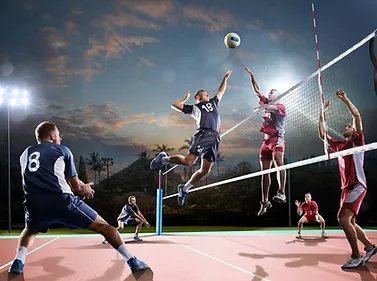Scapular Dyskinesis
Injury Guide

Scapular dyskinesis is a condition commonly encountered among athletes, and understanding its symptoms, causes, and rehabilitation strategies is crucial for a successful recovery. This condition refers to an altered movement pattern of the scapula, or shoulder blade, leading to abnormal shoulder mechanics and potential pain or dysfunction.
Symptoms:
One of the primary symptoms of scapular dyskinesis is shoulder pain, which can range from mild discomfort to severe agony. Athletes may experience pain during shoulder movements, particularly overhead activities such as throwing, serving, or lifting weights. Another symptom is a noticeable change in the position or motion of the scapula itself. The shoulder blade may appear to “wing out” or protrude excessively during certain movements, causing a visible abnormality.
Anatomy:
The scapula, or shoulder blade, plays a vital role in the proper functioning of the shoulder joint. It serves as a stable base for the attachment of various muscles involved in shoulder movements.
In a healthy shoulder, the scapula moves smoothly and synchronously with the humerus (upper arm bone). However, in individuals with scapular dyskinesis, this coordinated movement is disrupted, leading to abnormal shoulder mechanics and potential dysfunction.
Scapular dyskinesis often involves alterations in the positioning and motion of the scapula. The scapula can wing or tilt excessively, making it difficult to aim the joint upwards while reaching overhead. These abnormal scapular positions can have several implications on shoulder function.
Excessive scapular tilt can affect the stability of the shoulder joint, compromising its ability to handle forces effectively. It may lead to improper alignment between the glenoid (socket of the shoulder joint) and the humeral head, resulting in increased stress on surrounding structures such as the rotator cuff tendons.
“Winging,” occurs when the medial border of the scapula sticks out prominently. This abnormality can disrupt the normal muscle balance around the shoulder, leading to decreased stability and inefficient muscle recruitment patterns. As a result, athletes may experience weakness, limited range of motion, and decreased power during athletic movements.
Upward rotation of the scapula, which refers to the rotation of the inferior angle of the scapula upward, is essential for optimal shoulder mechanics. It allows for proper positioning of the humeral head within the glenoid, facilitating smooth movement and reducing the risk of impingement. In scapular dyskinesis, impaired upward rotation can contribute to altered shoulder mechanics and potential impingement-related symptoms.
These anatomical implications of scapular dyskinesis highlight the importance of addressing this condition promptly and effectively. By restoring normal scapular positioning and motion, athletes can enhance shoulder stability, improve muscle balance, and optimize athletic performance.
Causes:
Several factors can contribute to the development of scapular dyskinesis. Poor posture, muscular imbalances, and weak shoulder girdle muscles are common causes. Additionally, overuse or repetitive stress on the shoulder joint, such as repetitive throwing motions in baseball or swimming, can lead to scapular dyskinesis. It is important to note that scapular dyskinesis can also result from underlying shoulder conditions or injuries, such as rotator cuff tears or labral tears.
Rehab Strategies:
Physical therapy is often recommended as a non-invasive and effective treatment option. The primary goal of rehabilitation is to restore proper scapular movement, reduce pain, and improve overall shoulder function.
Physical therapists employ various techniques to address scapular dyskinesis. These may include therapeutic exercises to strengthen the muscles surrounding the shoulder joint, particularly the scapular stabilizers. By targeting specific muscle groups, such as the rhomboids, serratus anterior, and lower trapezius, athletes can regain stability and optimal shoulder mechanics. Use code 8D6WHDYP at medbridgego.com to see our favorite exercise for scapular dyskinesis.
In addition to exercises, manual therapy techniques are utilized to alleviate pain and restore range of motion. Soft tissue mobilization, joint mobilization, dry needling, and myofascial release are examples of manual therapy techniques employed by physical therapists to address muscle imbalances and promote tissue healing.
Furthermore, education and postural awareness are integral components of the rehabilitation process. Athletes are educated on proper body mechanics, ergonomic principles, and strategies to prevent future injury. By promoting awareness and implementing corrective strategies, athletes can reduce the risk of re-injury and maintain long-term shoulder health.
Don’t let scapular dyskinesis hinder your athletic performance and cause unnecessary pain. Contact our clinic today to schedule an appointment and take the first step towards a full recovery and optimal shoulder function.
Let’s
Work
Together
Ready to get started? Click here. General questions? Read our FAQ page. Have a specific question? Leave us a message!
